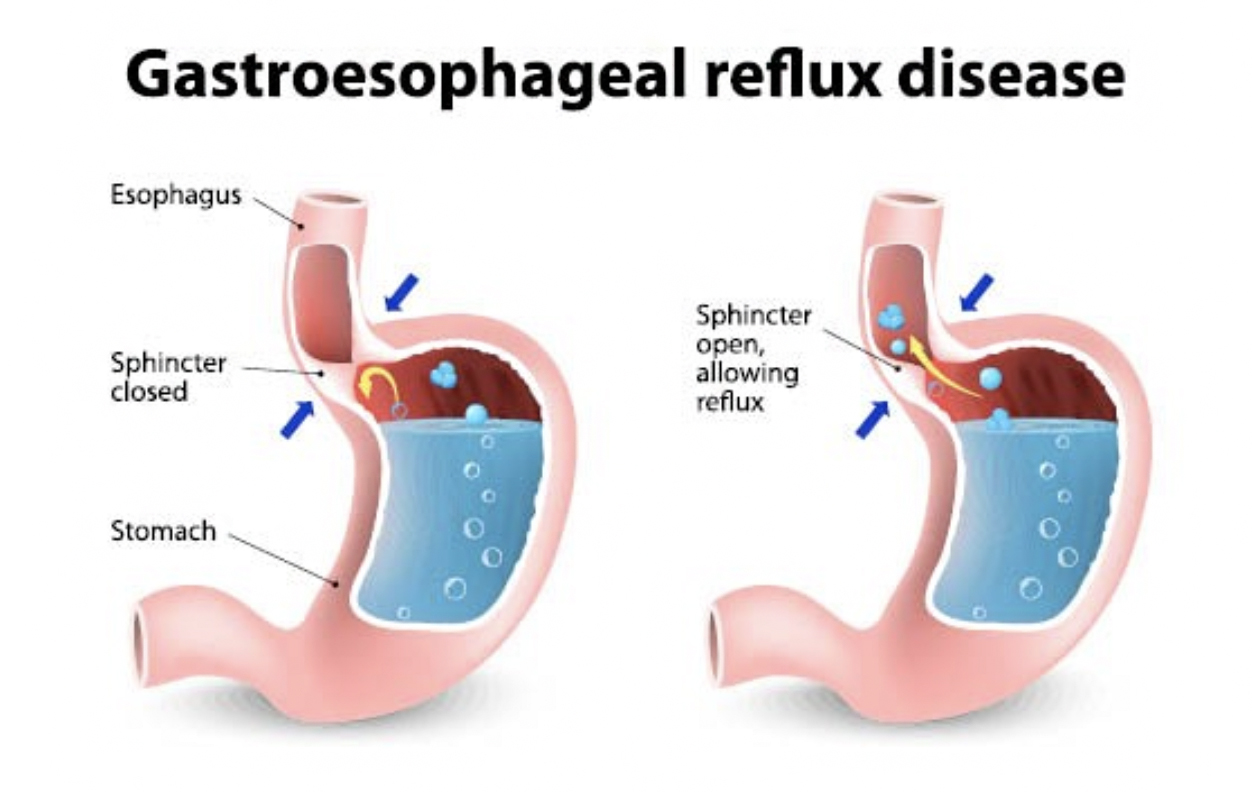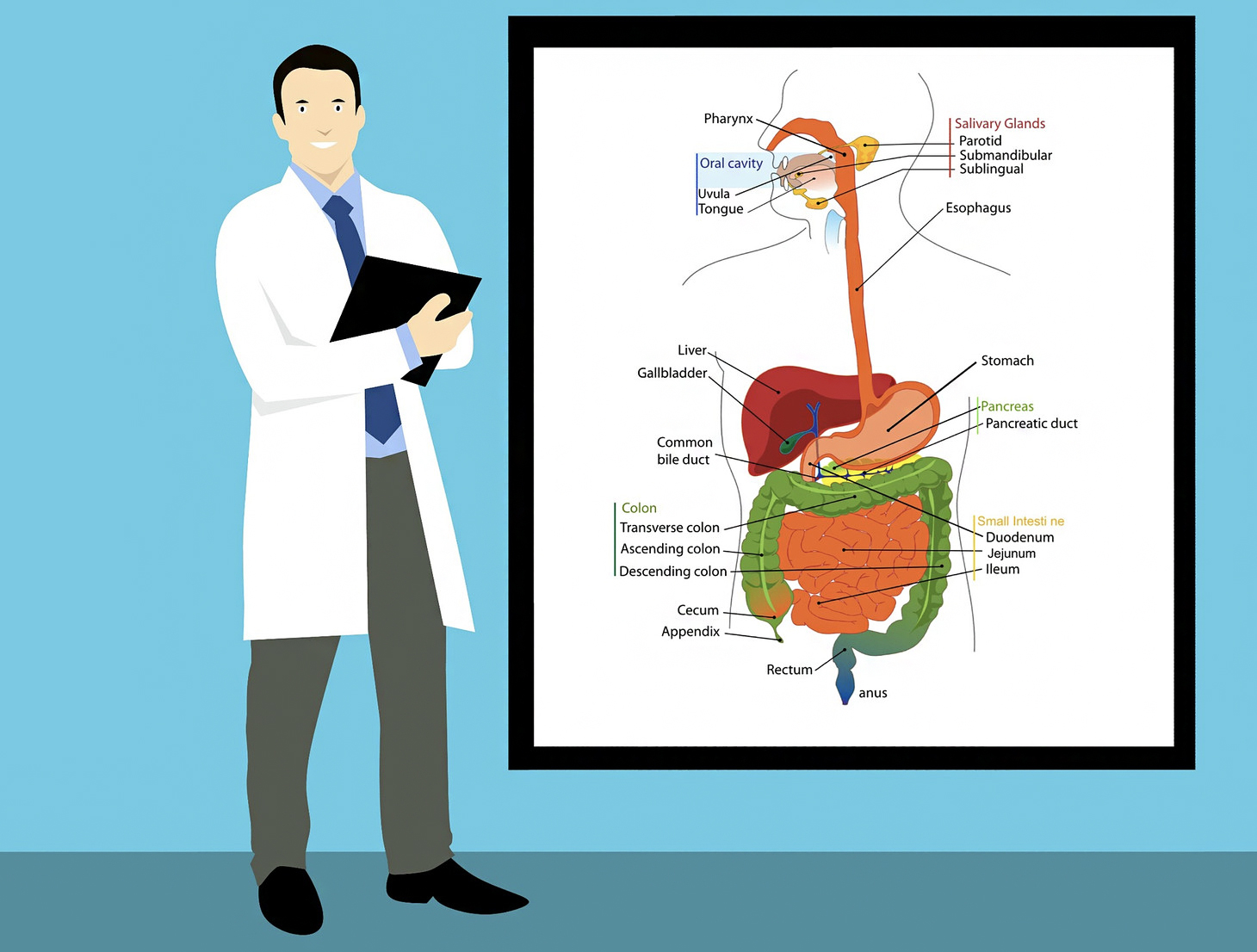Osteopathy and Gastroesophageal Reflux
Gastroesophageal reflux disease, or GERD or Heartburn, is a digestive disorder that affects the lower oesophageal sphincter, the ring of muscle between the oesophagus and stomach. Many people, including pregnant women, suffer from heartburn or acid indigestion caused by GERD. Physiologically, during swallowing, the sphincter relaxes and opens to allow the food to pass into the stomach. When this remains open without any swallowing, it causes a rise in the stomach contents in the oesophagus, gastroesophageal reflux, and can cause esophagitis.

It affects 14 to 20% of the population and one out of 10 has daily symptoms of GERD. It is also very common in new-borns because their digestive system is not mature. It is considered physiological during the first 3-4 months of life.
What are the symptoms and causes of gastroesophageal reflux?

Main Symptoms:
-
Heartburn: a burning sensation behind the sternum after a meal. This sensation is due to the fact that esophageal cells are not designed to withstand the acid pH in the stomach.
-
Acid regurgitation without nausea or vomiting effort
If you have nighttime acid reflux, you might also experience:
-
Chronic cough
-
Laryngitis
-
New or worsening asthma
-
Disrupted sleep
It is always important to consult a doctor if GERD has been present for some time but is associated with dysphagia (difficulty swallowing), weight loss or anaemia.
Risk factors:
Conditions that can increase your risk of GERD include:
· Obesity
· Bulging of the top of the stomach up into the diaphragm (hiatal hernia)
· Pregnancy
· Connective tissue disorders, such as scleroderma
· Delayed stomach emptying
Factors that can aggravate acid reflux include:
· Smoking
· Eating large meals or eating late at night
· Eating certain foods (triggers) such as fatty or fried foods
· Drinking certain beverages, such as alcohol or coffee
· Taking certain medications, such as aspirin
Source: MayoClinic
GERD, may Osteopathy help?

Gastroesophageal reflux is not a very common reason for consulting an osteopath. But this does not mean it can’t help.
Osteopaths firstly ensure that the nature of the disorder is within their field of expertise. In presence of any abnormal symptoms or possible complication, osteopaths will refer you to your doctor.
Osteopathy will aim to promote the mobility of different structures around the stomach and esophagus, including the diaphragm. In order to do so, osteopathy will work on the attachment areas of this powerful muscle: spine, sternum and ribs.
Posture is a crucial aspect to look at when you are experiencing GERD. Osteopathy would be also focused on your posture biomechanics in order to improve the mobility and the balance that would influence your diaphragm and therefore your GERD symptoms
Osteopathy can also work on the stomach and visceral relations (adhesions, loss of mobility) in order to establish a proper mobility.
Another kind of osteopathic approach, as important as the muscular one is the neurological one. Osteopathy, through manual assessment and treatment may influence the neurovegetative system. Indeed, this one controls the gastric secretion. For this purpose, osteopaths could assess the vagus nerves functionality by investigating the structures present on their path (cranium, clavicle, thorax, diaphragm and abdomen).
Interesting Research Papers about Osteopathy and GERD:
Bjørnæs, K. E., Reiertsen, O., & Larsen, S. (2016). Does Osteopathic Manipulative Treatment (OMT) have an Effect in the Treatment of Patients Suffering from Gastro Esophageal Reflux Disease (GERD). Int J Clin Pharmacol Pharmacother, 1(116), 2.
Diniz, L. R., Nesi, J., Curi, A. C., & Martins, W. (2014). Qualitative evaluation of osteopathic manipulative therapy in a patient with gastroesophageal reflux disease: a brief report. The Journal of the American Osteopathic Association, 114(3), 180-188.
Ong, A. M. L., Chua, L. T. T., Khor, C. J. L., Asokkumar, R., Namasivayam, V., & Wang, Y. T. (2017). Diaphragmatic Breathing Reduces Belching and Proton Pump Inhibitor Refractory Gastroesophageal Reflux Symptoms. Clinical Gastroenterology and Hepatology.
Gemelli, M., Ulbricht, L., & Romaneli, E. F. R. (2014). Evaluation of Gastroesophageal Reflux in Infants Treated with Osteopathy Using the I-GERQ-R Questionnaire. In XIII Mediterranean Conference on Medical and Biological Engineering and Computing 2013 (pp. 1067-1070). Springer, Cham.
Tips to relieve or prevent your Gerd symptoms:
· Lose weight if you are overweight. Extra pounds put pressure on your stomach, forcing more acid up into your oesophagus.
· Wear loose clothing. Tight clothes that press on your stomach can trigger heartburn.
· If you smoke, quit. Cigarette smoke relaxes the muscle that prevents acid from backing up into the oesophagus. It also may increase how much acid your stomach makes.
· Check your medicines. Regular use of anti-inflammatory and pain medicines (other than acetaminophen) contributes to heartburn.
· Avoid high-impact exercise.
If heartburn bothers you at night:
· Eat a light dinner and avoid foods that trigger your heartburn.
· Do not lie down for at least 2 to 3 hours after you eat.
Use blocks or books to raise the head of your bed by 4-6 inches. Alternatively, put a foam wedge under your mattress at the head of the bed. Sleeping at an angle will help stop acid from backing up into your oesophagus.
Source: WEBMD


